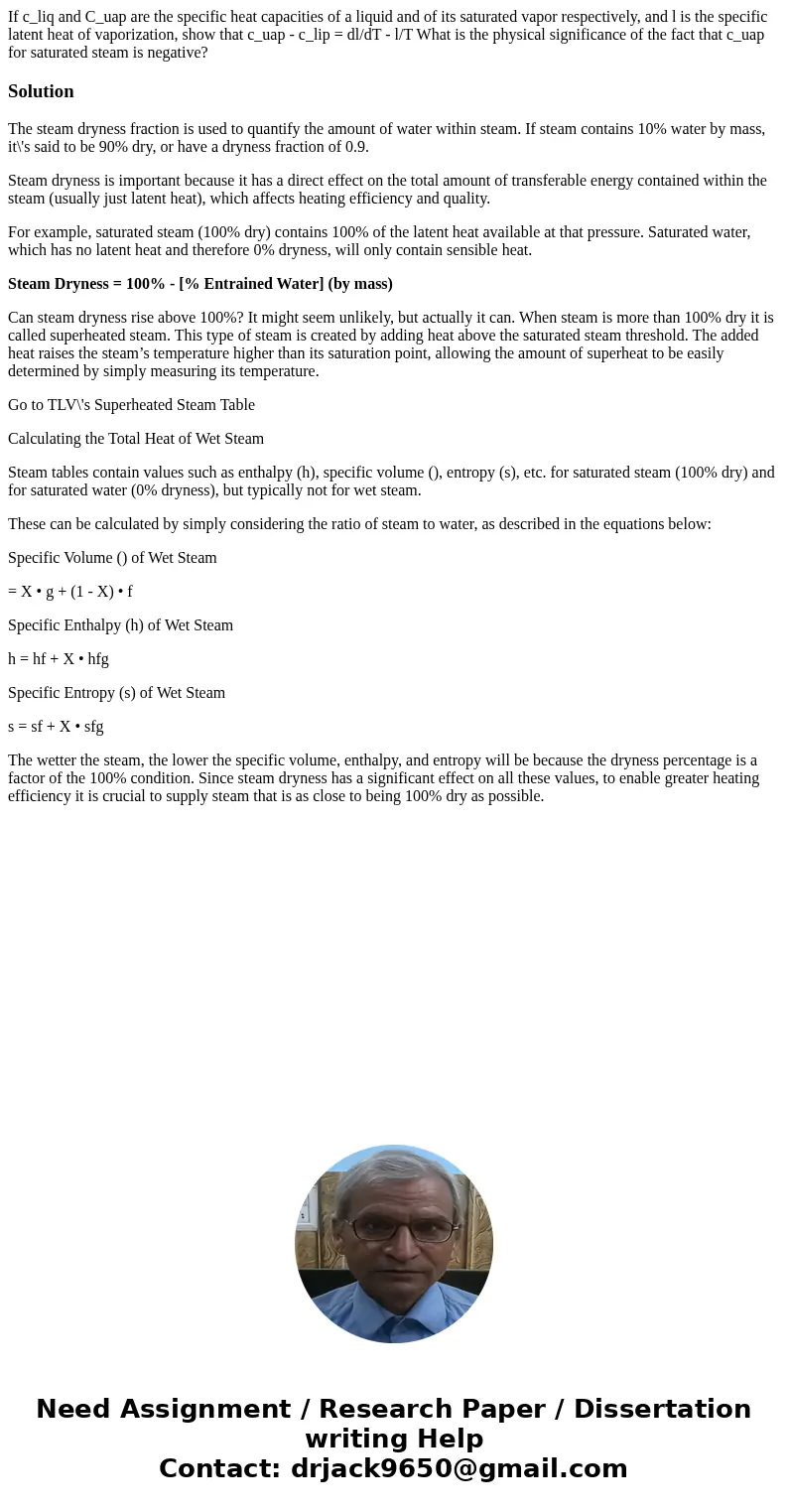If cliq and Cuap are the specific heat capacities of a liqui
Solution
The steam dryness fraction is used to quantify the amount of water within steam. If steam contains 10% water by mass, it\'s said to be 90% dry, or have a dryness fraction of 0.9.
Steam dryness is important because it has a direct effect on the total amount of transferable energy contained within the steam (usually just latent heat), which affects heating efficiency and quality.
For example, saturated steam (100% dry) contains 100% of the latent heat available at that pressure. Saturated water, which has no latent heat and therefore 0% dryness, will only contain sensible heat.
Steam Dryness = 100% - [% Entrained Water] (by mass)
Can steam dryness rise above 100%? It might seem unlikely, but actually it can. When steam is more than 100% dry it is called superheated steam. This type of steam is created by adding heat above the saturated steam threshold. The added heat raises the steam’s temperature higher than its saturation point, allowing the amount of superheat to be easily determined by simply measuring its temperature.
Go to TLV\'s Superheated Steam Table
Calculating the Total Heat of Wet Steam
Steam tables contain values such as enthalpy (h), specific volume (), entropy (s), etc. for saturated steam (100% dry) and for saturated water (0% dryness), but typically not for wet steam.
These can be calculated by simply considering the ratio of steam to water, as described in the equations below:
Specific Volume () of Wet Steam
= X • g + (1 - X) • f
Specific Enthalpy (h) of Wet Steam
h = hf + X • hfg
Specific Entropy (s) of Wet Steam
s = sf + X • sfg
The wetter the steam, the lower the specific volume, enthalpy, and entropy will be because the dryness percentage is a factor of the 100% condition. Since steam dryness has a significant effect on all these values, to enable greater heating efficiency it is crucial to supply steam that is as close to being 100% dry as possible.

 Homework Sourse
Homework Sourse